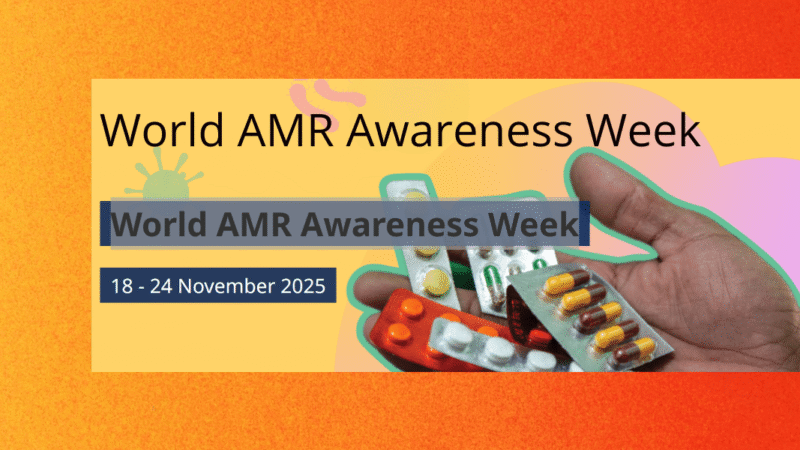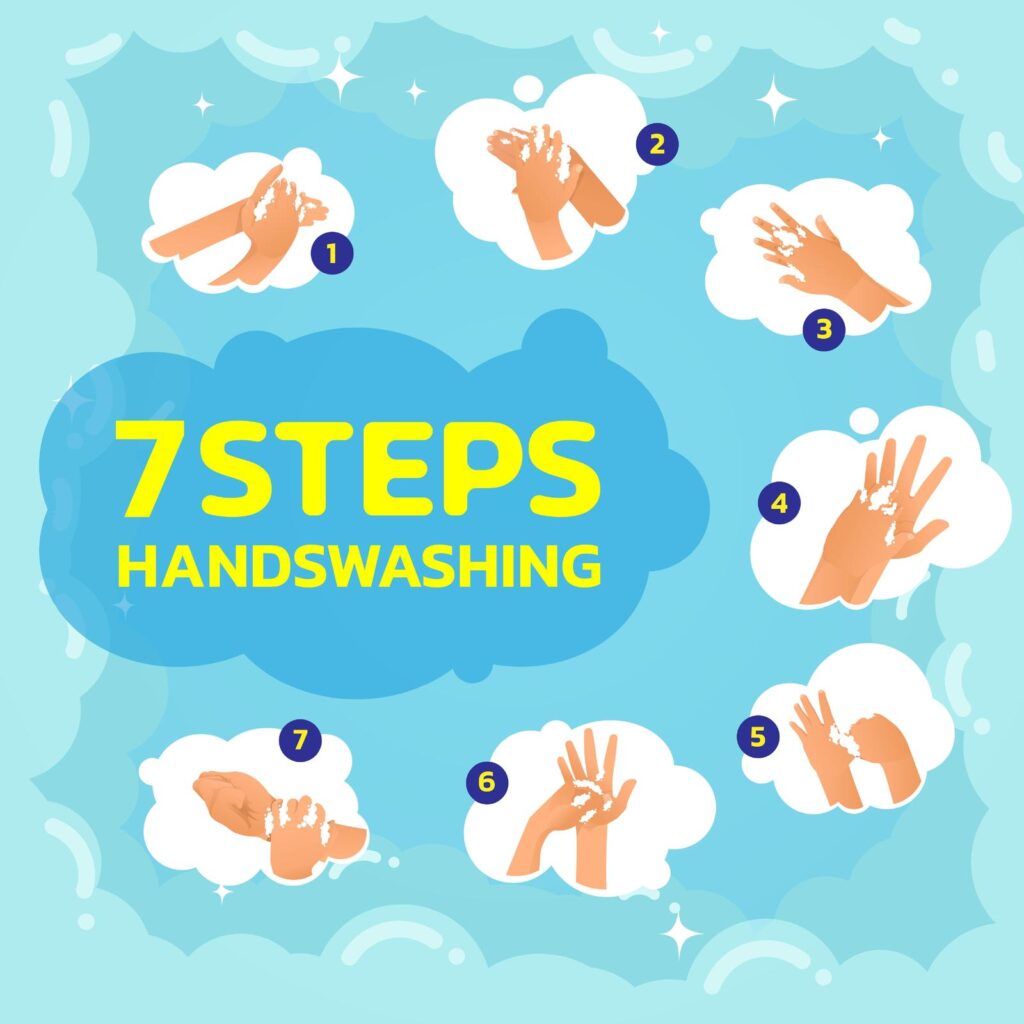
What is Antimicrobial Resistance (AMR)?
Antimicrobial Resistance (AMR) arises when various pathogens, including bacteria, viruses, fungi, and parasites, develop the ability to withstand the effects of antimicrobial treatments. This resistance renders antibiotics and other antimicrobial therapies ineffective, leading to challenges in treating infections.
Consequently, this situation heightens the likelihood of disease transmission, severe health complications, and increased mortality rates.
World Antimicrobial Resistance Awareness Week
World Antimicrobial Resistance Awareness Week (WAAW) is an international initiative designed to enhance awareness and foster a deeper understanding of antimicrobial resistance (AMR). This campaign also aims to encourage global efforts to address the rise and spread of drug-resistant pathogens. WAAW is officially recognized by the World Health Organization (WHO) and is mandated by the World Health Assembly, taking place annually from November 18 to 24.
The theme for WAAW 2025 is “Act Now: Protect Our Present, Secure Our Future.”
Life with microbes: Invisible roommates and unsung heroes
Microbes and microorganisms are the smallest living things we know, yet they play some of the biggest roles in our lives. These tiny beings are everywhere—floating in the air we breathe, living in the soil beneath our feet, swimming in every drop of water, and even thriving inside our own bodies. It’s almost impossible to find a place on Earth where microbes don’t exist. In fact, you’re never alone; you’re always surrounded by a bustling world of invisible roommates.
Types of microbes: bacteria, viruses, fungi, and parasites
When we talk about microbial diversity, we’re really talking about a whole universe of life forms. The main types of microbes include:
- Bacteria: Single-celled prokaryotes that come in many shapes and sizes. They’re famous for their roles in digestion, nitrogen fixation in plants, and even the production of antibiotics.
- Viruses: These are acellular, meaning they aren’t made of cells. Viruses can’t reproduce on their own—they need to hijack a host’s cells to multiply. Because of this, some scientists don’t even consider them truly alive.
- Fungi: This group includes both single-celled organisms like yeast and multicellular ones like molds and mushrooms. Fungi are expert decomposers, breaking down dead material and recycling nutrients. Some, like Penicillium, have given us life-saving medicines such as penicillin (discovered in 1928).
- Parasites: These microbes depend on other organisms to survive, sometimes causing disease, but many live harmlessly alongside us.
Microbes in the ecosystem: More than meets the eye
It’s easy to think of microbes as germs, but the truth is, most of them are not our enemies. As I like to remind myself, “The majority of these microbes don’t actually hurt you and play an essential role in things such as our digestion, protecting against infection, and contributing to the ecosystem.
- Digestion and gut health: Our digestive system is home to trillions of bacteria. These bacteria help break down food, produce vitamins, and keep harmful microbes at bay. Try going a week without your gut microbes—spoiler alert, it’s not a good idea!
- Protecting against infection: Good microbes crowd out the bad, making it harder for harmful invaders to take hold.
- Nature’s recyclers: Fungi and bacteria decompose dead plants and animals, returning nutrients to the soil. Without them, ecosystems would grind to a halt.
Microbial diversity: Unsung heroes
Microbes aren’t just invisible roommates—they’re unsung heroes. From the discovery of penicillin in 1928 to antifungals like nystatin (1949) and antiparasitics such as fibonazole (1961), microbes have given us powerful tools to fight disease. Even viruses, our relentless foes, have taught us about immunity and genetics. The world of microbes is strange, but without them, life as we know it simply wouldn’t exist.
When wonder drugs lose their magic: The rise of antimicrobial resistance
If you know about the history of antibiotics, you could picture Sir Alexander Fleming returning from his holiday in 1928, only to discover that a simple accident in his lab had changed the world. His discovery of penicillin marked a turning point in medicine. For the first time, deadly bacterial infections became treatable almost overnight. It was nothing short of a miracle. Soon after, more antimicrobial drugs followed: nystatin in 1949 (the first antifungal), fibonazole in 1961 (the first anti-parasitic), and idoxyuridine in 1963 (the first antiviral). These breakthroughs shaped the modern era of medicine.
But the euphoria didn’t last. As antibiotics and other antimicrobial drugs became widely available in the 1940s and 50s, doctors and researchers started noticing something strange. Some infections that were once easily cured began to linger. Certain strains of microbes stopped responding to treatment. At first, no one knew why. Little did anyone know that this was the early signs of what has become a significant global health challenge… AMR.
Why should we care? The global health impact
Almost every part of modern medicine relies on effective antimicrobial drugs. They help us treat diseases like tuberculosis, meningitis, and pneumonia. They’re essential for cancer care, chemotherapy, organ transplants, and even safe childbirth.
Operating rooms are kept sterile thanks to these drugs. Without them, simple infections could once again become deadly. Imagine a world where a paper cut could put you in the hospital for weeks. That’s not just a scary story—it’s a real risk if AMR continues to rise unchecked.
- Increased infection rates: AMR leads to more frequent and harder-to-treat infections.
- Complicated treatments: Doctors have fewer options, and treatments become less effective.
- Escalating healthcare costs: Longer hospital stays, more expensive drugs, and higher mortality rates all add up.
The early warnings and today’s reality
It’s sobering to realize that the first signs of antimicrobial resistance appeared almost as soon as antibiotics entered public use. Microbes are relentless foes—constantly evolving, always looking for ways to outsmart our medicines. Today, AMR is a global health crisis. The World Health Organization lists it as one of the top threats to human health. If we don’t act, we risk losing the magic of our wonder drugs—and with it, the foundation of modern medicine.

Handwashing, hype, and hope: Fighting back with smarter behaviours
Let’s be honest: when we picture the fight against dangerous microbes, we imagine high-tech labs, superhero scientists, and futuristic medicines. But the real hero in the story of infection prevention is far more ordinary—our own two hands. Turns out, one of the most effective ways to stop infections is the least glamorous: washing your hands. (Sorry, superhero fans!)
Infection prevention: The power of simple actions
Microbes are living things, and like all living things, they evolve over time. This means they can adapt to our medicines, making some treatments less effective. But here’s the good news: by changing our behavior in a few simple ways, we can reduce the overall impact of infections and slow down the rise of antimicrobial resistance (AMR).
‘Having strong infection prevention and control practices is perhaps the best and easiest way to reduce the risk of transmitting infections.’
Best practices for infection control start with the basics: good hygiene, sterilization, and the rational use of antibiotics. When we wash our hands, clean our spaces, and catch coughs and sneezes, we break the chain of infection before it even starts. This means fewer people get sick, and there’s less need for antibiotics in the first place.
Best practices infection control: Beyond handwashing
- Handwashing: The simplest, most effective tool for infection prevention. Soap and water remove harmful microbes before they can cause trouble.
- Clean environments: Regular cleaning at home, in offices, and especially in healthcare settings reduces the risk of spreading infections.
- Cough and sneeze etiquette: Catching coughs and sneezes in tissues or elbows stops germs from traveling.
- Environmental controls: Safe water treatment and responsible agricultural practices limit our exposure to harmful microbes in the environment.
Imagine every public restroom stocked with holographic soap dispensers reminding you, “Stop AMR—wash up!” Why not? Public awareness is a key part of strategies to combat AMR. The more we know, the smarter our choices become.
Rational use of antibiotics: Targeted treatments for a healthier future
New drugs are great, but reining in misuse and preventing transmission are crucial for the future of healthcare. The rational use of antibiotics—using them only when necessary and choosing the right type—helps preserve their power. Narrow-spectrum antibiotics target specific bacteria, while broad-spectrum antibiotics affect many types at once. Overusing broad-spectrum drugs speeds up resistance, making it harder to treat infections in the future.
Public awareness and healthcare infection control
Public awareness campaigns help everyone understand why infection prevention and healthcare infection control matter. My grandmother used to say, “Clean hands, clear conscience.” Science seems to agree. When we all practice best practices infection—from handwashing to smart antibiotic use—we protect ourselves and our communities from relentless microbial foes.
Conclusion: The microbial metropolis needs our vote
As we reflect on the strange and fascinating world of microbes and microorganisms, we should acknowledge how much these tiny life forms shape our lives—often without us even noticing. They are everywhere: in the air, the soil, the water, and even inside our bodies. Some are our greatest allies, helping us digest food, protecting us from harmful invaders, and keeping our environment in balance. Others, however, can turn into relentless foes, causing infections and diseases that challenge our health and well-being.
What’s truly remarkable is how adaptable microbes are. Whether they’re working for us or against us, they are masters of survival and change. This adaptability is at the heart of the growing problem of antimicrobial resistance (AMR). As we’ve seen, the more we use antimicrobial drugs—like antibiotics, antivirals, antifungals, and antiparasitics—the more opportunities we give microbes to evolve and outsmart our medicines. This isn’t just a distant scientific issue; it’s a real and present challenge that affects every one of us.
But here’s the good news: our everyday choices matter. The fight against AMR isn’t just happening in labs or hospitals—it’s happening in our homes, schools, and workplaces. Simple infection control practices like washing our hands thoroughly, covering our mouths when we cough or sneeze, and keeping our living spaces clean can make a huge difference. These small actions break the chain of infection, reducing the spread of harmful microbes before they can do damage.
Equally important is how we use antimicrobial medicines. Taking antibiotics only when truly needed, finishing prescribed courses, and never sharing leftover medication are all ways we can help slow the rise of resistance. It’s about making informed decisions and not taking these life-saving drugs for granted. When we use them wisely, we help preserve their power for ourselves and for future generations.
Raising awareness
Raising public awareness of AMR is also crucial. The more we understand about how microbes work—and how resistance develops—the better equipped we are to make choices that protect our health and our communities. Sharing knowledge, talking openly about these issues, and supporting science-based policies all contribute to a healthier, safer world.
In the end, the “microbial metropolis” is a place where we all live, whether we realize it or not. Our actions, big and small, are like votes for the kind of world we want to build. By embracing our role—yes, even if it means being a little extra about handwashing or kitchen cleaning—we become part of the solution. It’s a team effort, and every one of us counts. Together, through collective action and informed choices, we can tip the scales in favour of science, safeguard the effectiveness of antimicrobials, and ensure that our tiny allies continue to work with us, not against us, for generations to come.
Microbes are everywhere—most help us, some harm us, and antimicrobial resistance is reshaping medicine. Staying informed and adopting smart hygiene practices is everyone’s business!
World Health Organization
Visit the World Health Organization website to learn more by clicking on this link.
Visit the World Health Organization for more information about Anitmicrobial Resistance.
